By Rita Brhel, managing editor and attachment parenting resource leader (API)
**Originally published in the Spring 2008 New Baby issue of The Journal of API
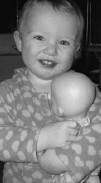
I love babies, especially the newborns. I love breastfeeding, babywearing, co-sleeping, the whole shebang. When other mothers can hardly stand to get through those first couple months of irregular schedules and sleep deprivation, of crazy diaper explosions and unpredictable spit-up sessions, I am soaking it all in – the comfort of knowing that I am all my little one needs, at least for a little while. For all the challenges my oldest daughter, Rachel, threw my way during her first year of life, the joys and amazement of becoming a parent far outweighed the negatives.
When Rachel turned eight months old, I turned to my husband Mike and said that I thought it’d be fun to have a baby every year. The next month, we found out I was pregnant. It wasn’t planned, but it was wonderful news. There was a problem, however, in that Rachel was far too young to comprehend what it meant to have a new baby brother or sister. Throughout the pregnancy, I tried to introduce the concept of a “baby” to her. I pointed out babies in books and on the TV. I wrapped up one of her stuffed animals in a diaper and blanket. We visited a friend with a newborn baby.
Reality Sets In
In my ninth month of pregnancy, I began to worry about how bringing home a new baby would affect my 16-month-old daughter. How would Rachel handle living with Grandma in an unfamiliar house while I was in the hospital? How would she deal with me being unable to lift her and hold her for eight weeks after a medically necessary cesarean section? How would she cope with not being the sole center of my universe? Continue reading Sibling Spacing: One Year Apart, Too Close or Just Right?
 According to an article on the United Arab Emirates’ TheNational.ae, “More than Sadness,” the rate of children with depression in the UAE is on the rise.
According to an article on the United Arab Emirates’ TheNational.ae, “More than Sadness,” the rate of children with depression in the UAE is on the rise. An article on the United Kingdom’s TimesOnline.com, “Tackle Child Obesity: Teach Mums to Eat,” explains how the solution to rising childhood obesity is in teaching parents that their eating behavior is how children themselves learn to eat.
An article on the United Kingdom’s TimesOnline.com, “Tackle Child Obesity: Teach Mums to Eat,” explains how the solution to rising childhood obesity is in teaching parents that their eating behavior is how children themselves learn to eat. One year, two years, five years, ten years – just what is the ideal spacing between siblings?
One year, two years, five years, ten years – just what is the ideal spacing between siblings?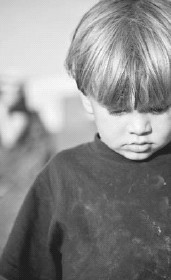 The typical scenario of a young married couple adopting an infant from birth has changed dramatically and has been redefined. Historically, a traditional adoption was defined as a healthy infant placed with an infertile, middle-class white couple.
The typical scenario of a young married couple adopting an infant from birth has changed dramatically and has been redefined. Historically, a traditional adoption was defined as a healthy infant placed with an infertile, middle-class white couple. I don’t know why, as adults, we think we know everything. Maybe we just automatically subscribe to the theory that as we get older, we get wiser. What I think actually happens is we become more jaded, and we mistake that for knowledge. I think we all agree that age does not teach us. Experience does. That’s why some of my most powerful learning experiences have come from folks far younger than me – but wise beyond their years.
I don’t know why, as adults, we think we know everything. Maybe we just automatically subscribe to the theory that as we get older, we get wiser. What I think actually happens is we become more jaded, and we mistake that for knowledge. I think we all agree that age does not teach us. Experience does. That’s why some of my most powerful learning experiences have come from folks far younger than me – but wise beyond their years.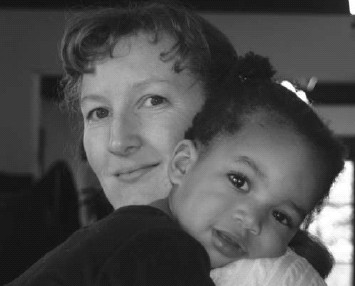
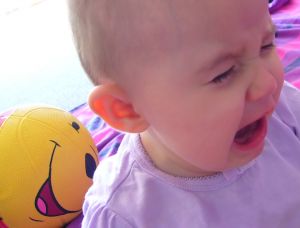 An article on France’s InfosJuenes.com, “Risk of Maternal Depression on the Infant,” reveals research that shows the negative effects of depression in mothers on their babies.
An article on France’s InfosJuenes.com, “Risk of Maternal Depression on the Infant,” reveals research that shows the negative effects of depression in mothers on their babies.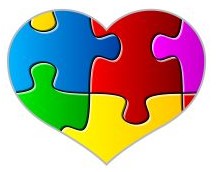 The Sturgis (Mich.) Journal has published an article, “Ideology Gives Way to Nurturing for Adoptive Parents,” on November 26, 2008, that features a couple who have fully embraced Attachment Parenting during their last 36 years of foster parenting.
The Sturgis (Mich.) Journal has published an article, “Ideology Gives Way to Nurturing for Adoptive Parents,” on November 26, 2008, that features a couple who have fully embraced Attachment Parenting during their last 36 years of foster parenting. The makers of Motrin received a flood of feedback from parents about the ibuprofen brand’s latest advertising campaign targeting mothers. The ad, which had been released in November, had put moms and dads on the offensive as the ad’s spokeswoman speaks on the so-called (back, neck, and shoulder) pains of babywearing.
The makers of Motrin received a flood of feedback from parents about the ibuprofen brand’s latest advertising campaign targeting mothers. The ad, which had been released in November, had put moms and dads on the offensive as the ad’s spokeswoman speaks on the so-called (back, neck, and shoulder) pains of babywearing.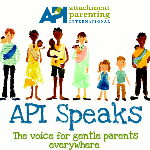
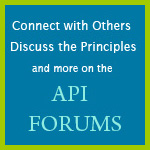 In addition, this topic is being discussed on the API Forums at
In addition, this topic is being discussed on the API Forums at